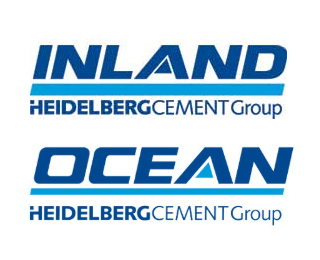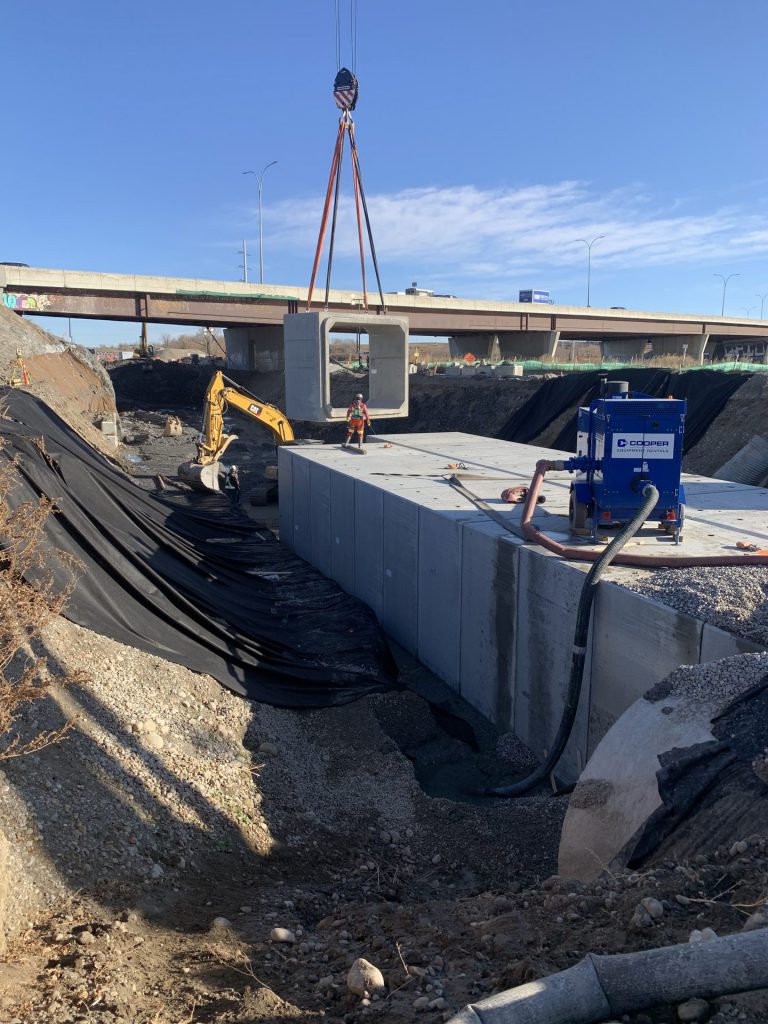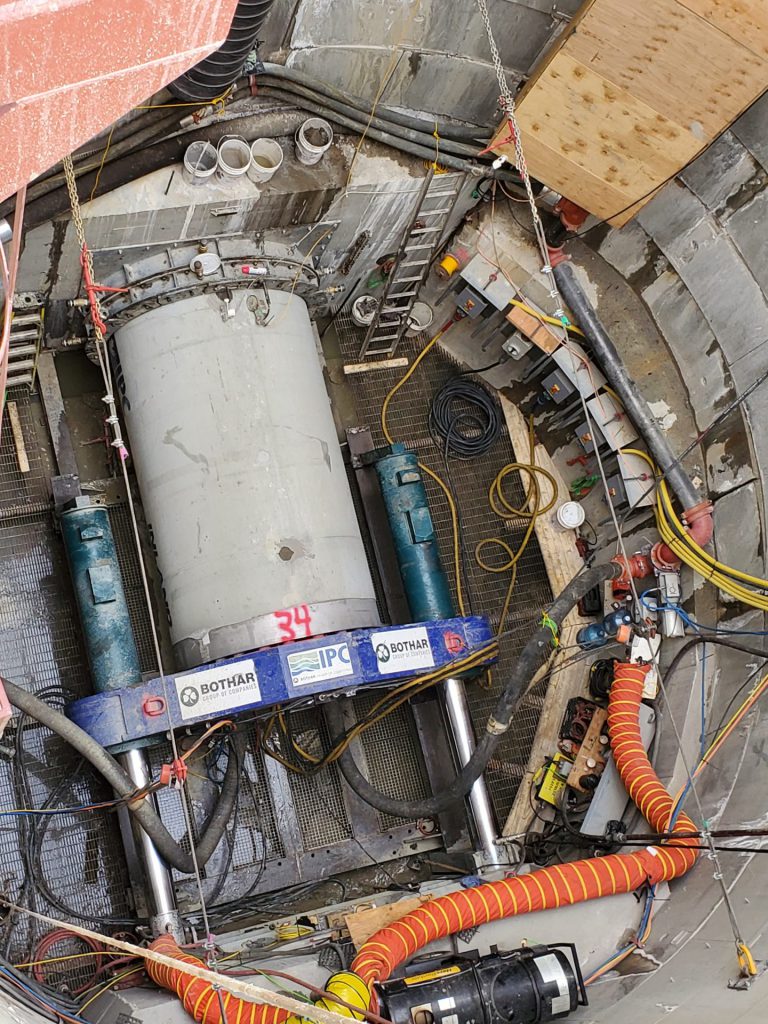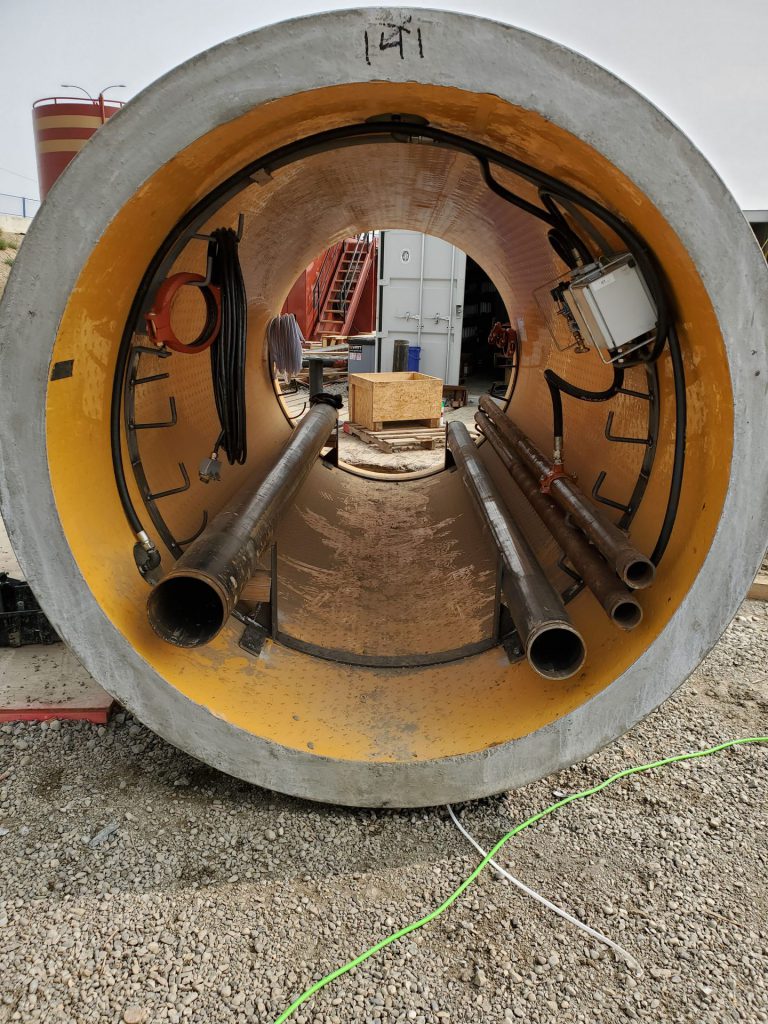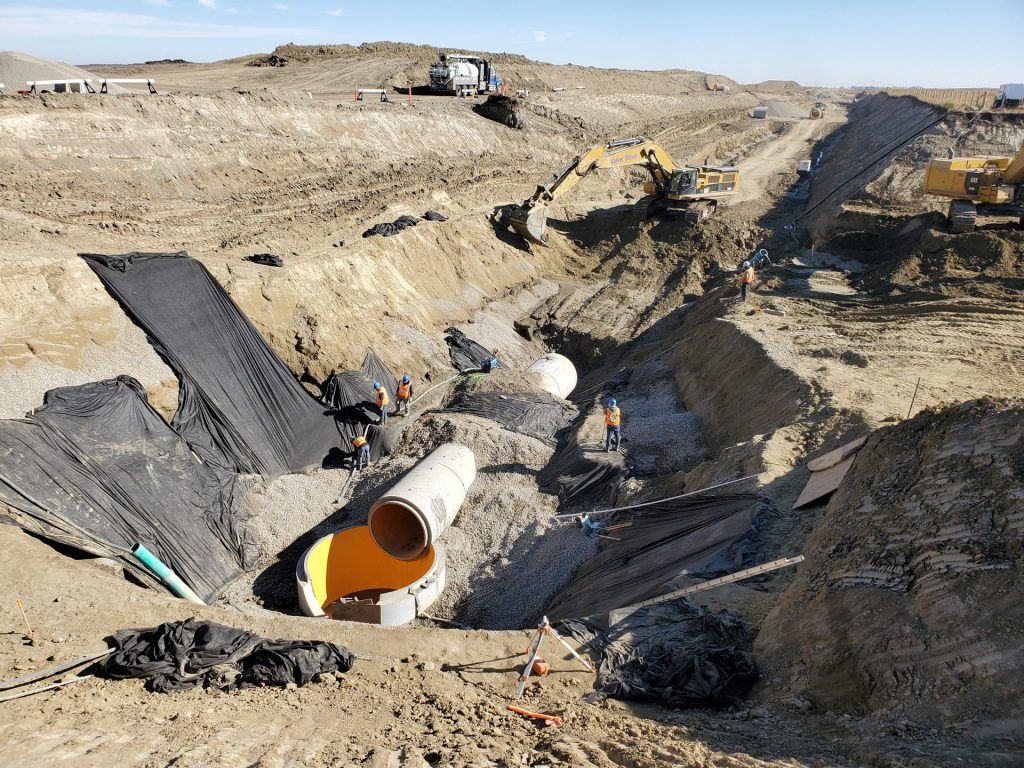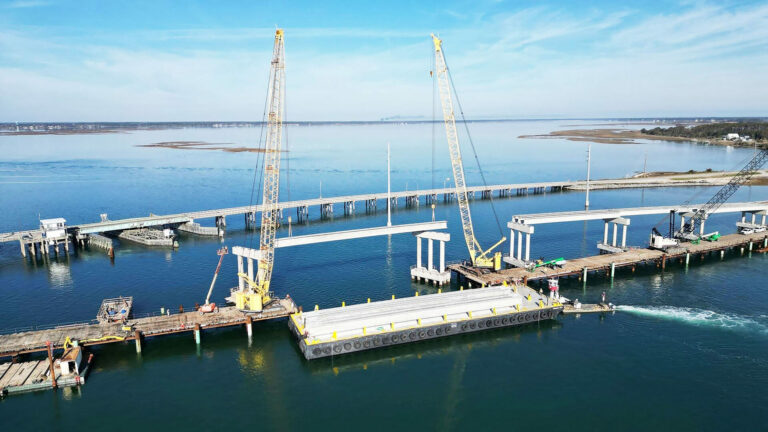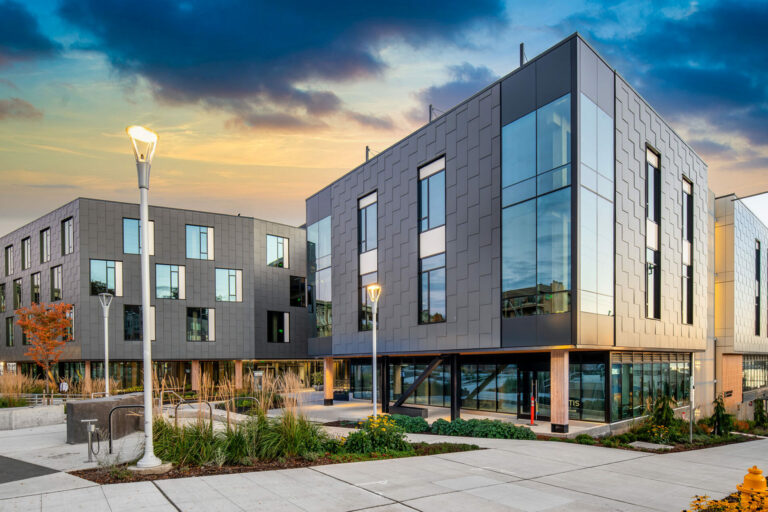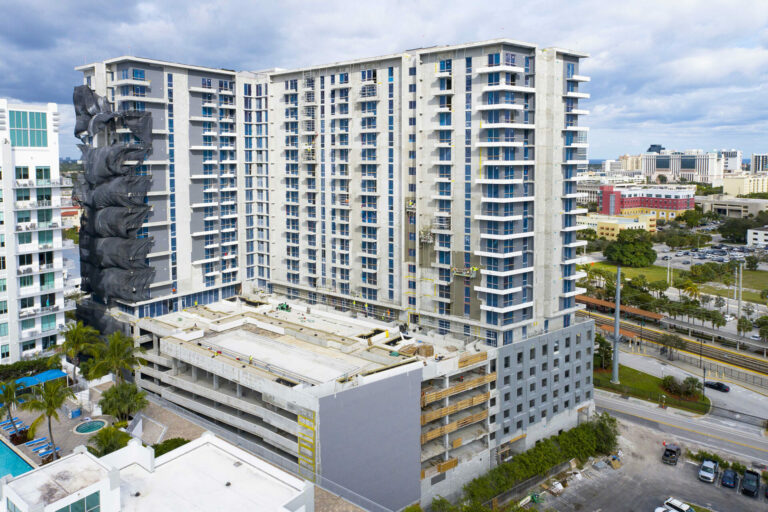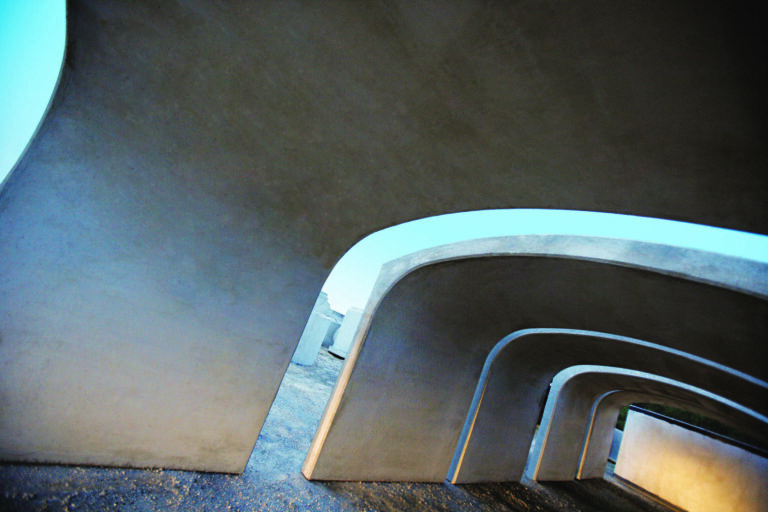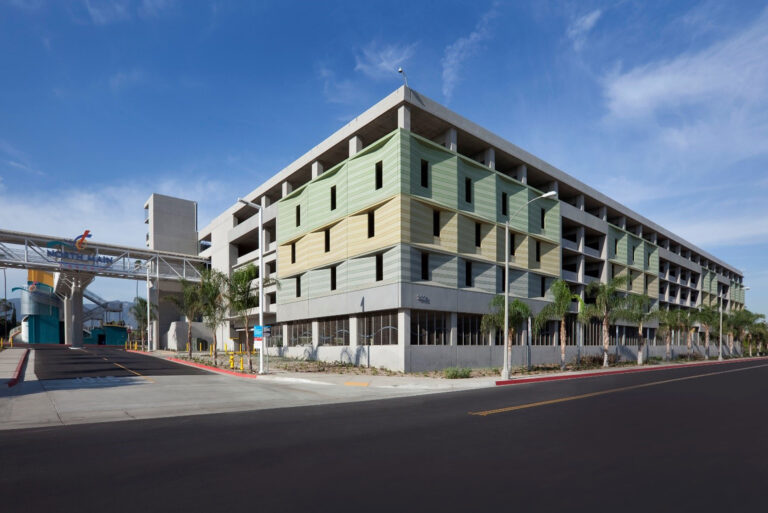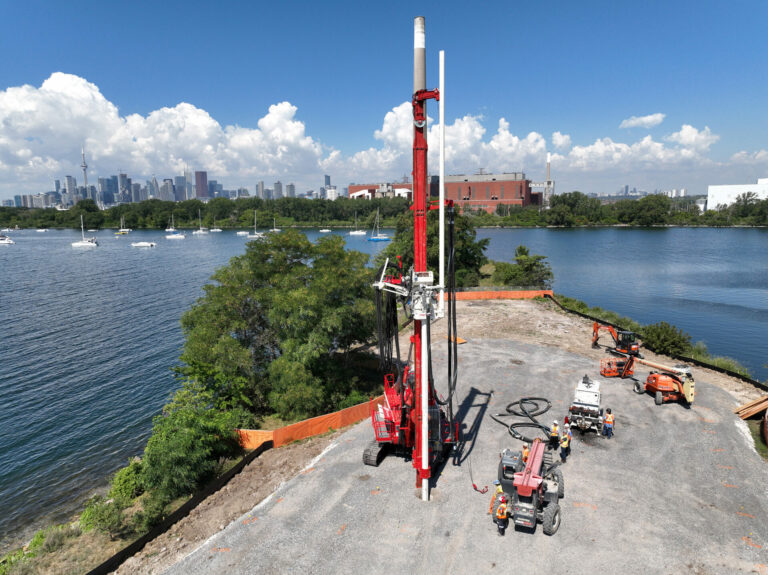The Prairies cover an almost inconceivable stretch of land across Western Canada. At nearly 690,000 square miles, you could fit France inside with some change left over. Forever skies. Wide-open spaces. A volume of space that dwarfs even our most ambitious engineering feats and architectural wonders. It’s a landscape that seems a natural home for a company like Inland Pipe, whose portfolio includes one colossal project after another.
Based in Calgary, Southern Alberta, at the edge of the Prairies, Inland Pipe, alongside its sister outfit, Lehigh Cement (formerly Inland Cement), has been manufacturing and supplying concrete pipe and cement in the region for more than a century. The original iteration of the company was the result of four construction companies banding together and forming Consolidated Concrete. These days Inland Pipe operates as part of Lehigh Hanson, the North American subsidiary of HeidelbergCement, and is one of the industry’s leaders in front-to-back concrete piping solutions. Technical Sales Manager Shawn Rogers has been with Inland since the mid-eighties, rising up through the ranks as the company drew the attention of global conglomerates. About being with the company he said, “We were Consolidated Concrete at the beginning and then we transitioned into CBR Hydropipe. We have been under the Lehigh Hanson brand for a little over ten or twelve years now. We do tend to have a fairly long loyalty list.” With a devoted workforce and an ability to tackle large-scale projects, it’s little surprise Inland Pipe was appealing to a large construction materials company like Lehigh Hanson. And you don’t have to look far from Inland’s Calgary headquarters to find examples of its abilities.
The Bonnybrook Wastewater Treatment Plant is the largest of Calgary’s three plants and was first constructed in the 1930’s. The population growth of the city and its environs over the years necessitated that its biggest wastewater plant be significantly upgraded. Inland Pipe was one of the companies sought out to work on the sizeable project. Rogers recounted, “There’s been some expansion plans for years. It was kind of expedited, if you will, by the floods that we had. They were revamping the outfall structure and upgrading capacity at the at the wastewater facility.” While no large-scale project would be considered easy, on its face it may seem a job like any other for a concrete piping company. The expansion of Bonnybrook, however, contained considerably more difficult challenges than at first glance. Rogers continued, “The challenge of it was that it had to go underneath one of the Canadian National rail lines. So, you only get about a twenty-day construction window for installing or shutting down the rail spur.” On top of the normal intense logistics endemic to laying underground pipe, the Bonnybrook project required alacrity as well. Speed and quality aren’t always comfortable bedfellows, but sometimes there’s no choice in the matter. Sometimes you just have to answer the bell. Rogers summed up the complexity of the installation, “So, there were essentially four different conduits stacked on top and beside each other. The rail spur had to be taken apart, the berms ripped down, the boxes installed, backfilled, and the rail line put back in place. It was quite an operation.” And all inside the twenty-day deadline. Perhaps the art of working underground inculcates a manner of understatement in its practitioners.
“Speed and quality aren’t always comfortable bedfellows, but sometimes there’s no choice in the matter. Sometimes you just have to answer the bell.”
If complexity is one axis of the challenge graph, scale is represented on the perpendicular. In the Cranston neighborhood of southern Calgary, the Rangeview Sanitary Trunk project required laying 3.4 kilometers of pipe. On top of the sheer length of the installation, Inland was operating with a newer technology. Only appearing in North American operations relatively recently, micro-tunnelling installed pipe is used in smaller-bore tunnelling projects, ranging from 500 to 4000 millimeters in diameter. The small size doesn’t allow for operators to drive the machines and so an even higher degree of precision than normal is required. According to Rogers, “It’s a very tightly spec’d product and you need a lot of trust. There’s a lot of emphasis placed on the supplier product and quality.” The first micro-tunnel projects in the region were actually supplied by pipe companies from outside the province due to the delicate nature of the work. Relying on previous relationships where that trust had already been built, made it difficult for any of the Alberta concrete pipe companies to get a foot into the micro-tunnelling game at first. Eventually, however, Inland was able to join forces with one of its prior partners to win the Rangeview job and expand its repertoire in a progressive direction. Rogers continued, “One of our major customers in Calgary, Volker Stevin, we’ve got a long-term relationship with them. And they joined forces with another tunnelling company, Innovative Pipeline Crossings. They’re actually owned by Bothar, which is a leader out of Australia. They’re quite a substantial micro-tunnel company that is looking to make a presence and establish a footprint in North America. So, we were able to partner up with them for this project and it was turned out quite well. This is pretty successful project.”
As in the case with expansion into micro-tunnelling, Inland is pushing forward into other progressive arenas as well. Across all industries, climate-friendly solutions are rapidly becoming not just sensible options but the state of the art. Inland’s Cement division is offering EcoCemPlus amongst its range of cementitious materials. Designed to impart both strength and durability, it also significantly lowers the environmental effect of cement and concrete. A Portland-limestone blend, EcoCemPlus has less storage requirements at plants and was found to have a 22 percent smaller carbon footprint than General Use cement. And they’re pushing even further ahead into the realm of cutting-edge technologies. Rogers said, “The other thing our cement people are doing is, in Edmonton, they are undertaking a feasibility study of building a carbon capture facility where they’re going to actually capture the CO2 off of their operation.” Inland Pipe is certainly used to stepping up to monumental tasks. Engaging with the front line of heavy-industry environmental technology seems to be just the next step along the path of success.
Despite its significant successes over the years, challenges always remain. The pandemic has collected a heavy toll everywhere, including from most businesses. Juggling cost-concerns with the welfare of employees is no easy consideration. Then there are the more prosaic concerns of market fluctuations, which vary significantly in Canada. Rogers remarked, “There’s a different market for pricing even between southern and northern Alberta. And then it just it varies greatly as you go province to province. You’re always trying to keep your finger on the pulse of where the market is for each region. It can be a challenging thing to try and keep up with.” One strategy the company is turning towards to ensure future growth is a more holistic market offering. Being able to meet every aspect of their customer’s needs. Rogers said, “So, there’s a lot of value-added opportunities we’re pursuing, partnering up through some of the waterworks individuals that are out there so that we can provide turnkey options to the market to essentially reduce construction time in the trench. Our industry operates on how many days in the trench the contractors need to get the products in the ground. So, if you can reduce it in any way, it’s going to be helpful to them and it’s going to make everything more efficient.”
Tackling some of North America’s largest concrete pipe installations is a given. Embracing and developing new climate-friendly materials and technologies has begun. Keeping a constant eye out for potential partnerships to expand the breadth and reach of Inland Pipe is ongoing. It’s the kind of vast ambition that requires a broad horizon. And the Prairies happily oblige.










